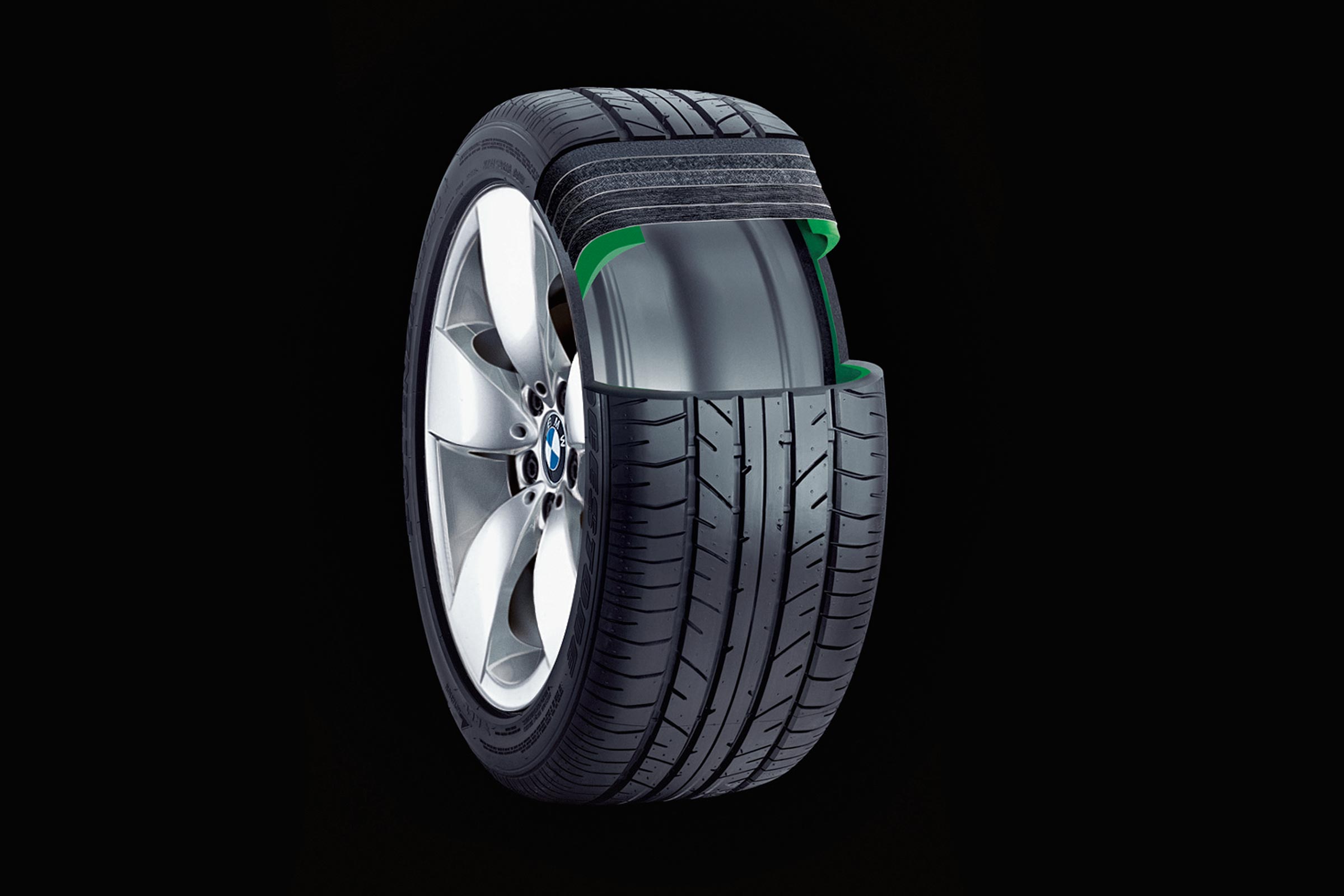

Still, they're pretty much toast after 50 miles. DriveGuards feature something called cooling fins molded into the sidewalls to disperse heat. In a deflated run-flat tire the internal flexing generates lots of heat, which destroys both the rubber and the underlying steel-and-fabric structure. The tire-pressure warning light on the dash glows. If it works so great, how will I know I have a flat?

On a wet course we found traction on both DriveGuard and Bridge stone's traditional Turanza to be the same. It pulled a little under braking, and there was noticeable noise, but not the flapflapflap of a typical flat. Well, kind of: Bridge stone had painted a mark on the tire, so you could see that the tire had slipped a little around the wheel rim, something the engineers said is acceptable. One tight corner would have pulled a flat standard tire off the rim, but the DriveGuard stayed put. We maneuvered a Toyota Camry equipped with them through a tricky course with a deflated front-left tire. But the DriveGuard has a taller profile that yields a better ride. That includes most new passenger cars since 2008, though the system can be retrofit on older cars.Įarlier generations of run-flats were too heavy, too noisy, and not durable. Run-flats should be installed only on cars that have a tire- pressure monitoring system (TPMS) that alerts the driver to a pressure decrease. Though the technology has been around since the 1980s, the Bridgestone Drive Guard is the first to really go mainstream-and at a price that's comparable to an equivalent touring-grade tire ($100 to $200). It's built with stiff sidewalls so that even when deflated it can support the car.

Play icon The triangle icon that indicates to playĪ run-flat tire will run, uh, flat for 50 miles at 50 mph, enough to get you to a repair shop.


 0 kommentar(er)
0 kommentar(er)
